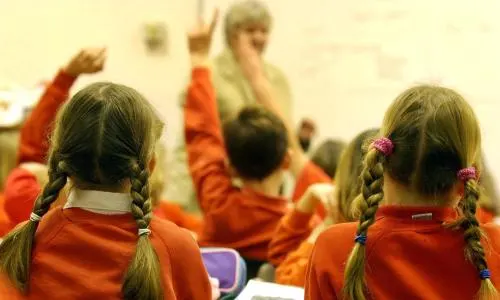Introduction
Image Source: Unsplash
In recent years, there has been a growing concern about the state of secondary education in England. This article explores the alarming statistics and issues surrounding the country’s secondary schools. From high levels of truancy to outdated teaching methods, it is clear that something needs to change. In this article, we will delve into the reasons behind these problems and discuss potential solutions for creating a more engaging and relevant educational experience for students.
The Rise of Truancy
One of the most concerning statistics is the rise in truancy rates among secondary school students. According to recent data, persistent absenteeism has doubled since the lockdown, with 22% of pupils now skipping school. This alarming figure has led to a third of a million parents being fined. While poverty, parental neglect, and mental health issues among teenagers may contribute to this trend, it is important to examine the role of schools themselves.
Outdated Teaching Methods
While primary schools have made efforts to update their teaching methods, secondary schools have fallen behind. Many have embraced a system of rote-learning and excessive testing, which creates a hostile and unengaging environment for students. The focus on memorization and regurgitation of information is reminiscent of an archaic academic tradition that fails to prepare young people for the modern world.
Mathematics professor Hugh Burkhardt highlights the absurdity of British classrooms, where heavy arithmetic is still done by hand despite the prevalence of digital technology. The curriculum and teaching methods in secondary schools have changed little over the years, leading to a lack of creativity, teamwork, and practical skills among students.

A Collapse in Technical and Creative Subjects
Recent reports have shed light on the decline of technical and creative subjects in secondary schools. Over the past 13 years, technical subjects have seen a decline of 70% to 80%, while creative subjects like drama, music, and dance have dropped by 50%. This narrowing of the curriculum limits students’ exposure to a diverse range of subjects and stifles their creativity.
Neglecting Physical Fitness and Well-being
Another area where secondary schools are falling short is physical fitness and well-being. Less than half of children participate in enough sport, while obesity rates continue to rise. The focus on academic subjects comes at the expense of promoting a healthy lifestyle and instilling important life skills such as money management, civics, and social skills.
The Need for Change
The current state of secondary education in England is not only senseless but also fails to resonate with parents and students. The market for traditional academic schooling is collapsing as more people recognize the need for a more relevant and engaging educational experience. It is crucial that the education system evolves to meet the demands of the modern world.
Solutions for the Future
To address the issues plaguing secondary education, a comprehensive approach is needed. It is essential to move away from the outdated teaching methods and narrow curriculum that currently dominate secondary schools. Here are some potential solutions to consider:
1. Emphasize Creativity and Practical Skills
Secondary schools should place a greater emphasis on creativity and practical skills. This can be achieved by incorporating subjects like art, music, drama, and vocational training into the curriculum. By providing students with opportunities to explore their interests and develop their talents, schools can foster a love for learning and equip students with valuable skills for the future.
2. Promote Physical Fitness and Well-being
Physical fitness and well-being should be given equal importance alongside academic subjects. Schools should provide ample opportunities for students to engage in sports, physical activities, and promote healthy lifestyle choices. Additionally, teaching life skills such as money management, civics, and social skills will empower students to navigate the challenges of adulthood.

3. Modernize Teaching Methods
To create a more engaging learning environment, teaching methods need to be modernized. Rote-learning and excessive testing should be replaced with interactive and practical approaches. Utilizing technology in the classroom can also enhance learning outcomes and better prepare students for the digital age.
4. Collaboration with Industry and Community
Building strong relationships with local industries and communities can provide students with real-world experiences and practical knowledge. Partnerships with businesses, organizations, and universities can offer internships, apprenticeships, and mentorship programs, enabling students to gain valuable insights and skills relevant to their future careers.
Conclusion
It is evident that the current state of secondary education in England requires significant changes. The rise in truancy rates, outdated teaching methods, and a narrow curriculum are all contributing factors to the disengagement of students. By prioritizing creativity, practical skills, physical fitness, and modern teaching methods, we can create a more relevant and engaging educational experience for secondary school students. It is time to embrace change and ensure that our education system prepares young people for the challenges and opportunities of the modern world.
